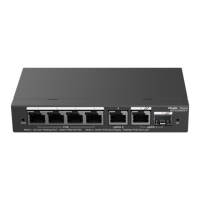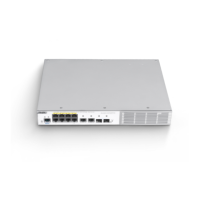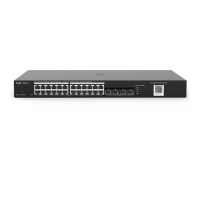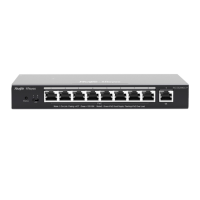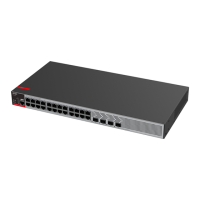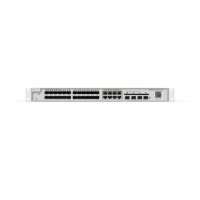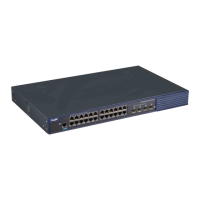Hardware Installation and Reference Guide Preparation Before Installation
ii
The ambient temperature and humidity of the RG-ES100 series switch must meet the requirements listed in Table 2-1.
Table 2-1 Temperature and Humidity Requirements of the RG-ES100 Series Switch
0°C to 45°C (32°F to 113°F)
The requirements for the sampling site of the temperature and humidity in the operating environment of the device
are as follows:
There is no protective plate at the front or back of the rack.
The vertical height is 1.5 m above the floor.
The distance from the front panel of the device is 0.4 m.
2.2.3 Cleanness
Dust poses a severe threat to the running of the device. The indoor dust falling on the device may be absorbed by the
static electricity, causing bad contact of the metallic joint. Such electrostatic absorption may occur more easily when the
relative humidity is low. This affects the device lifecycle and causes communication faults. Table 2-2 lists the requirements
for the dust content and granularity in the equipment room.
Table 2-2 Requirements for the Dust Content and Granularity in the Equipment Room
Apart from dust, the salt, acid, and sulfide in the air in the equipment room must also meet strict requirements. This is
because such poisonous substances may accelerate the corrosion of the metal and the aging of some parts. The
equipment room should be protected from the intrusion of harmful gases such as sulfur dioxide, sulfured hydrogen, nitrogen
dioxide, and chlorine. Table 2-3 lists the requirements.
Table 2-3 Requirements for Harmful Gases in the Equipment Room
The average and maximum values are measured for a week. The switch cannot be placed in the environment with
the maximum density for over 30 minutes every day.
2.2.4 Interference Resistance
The switch is vulnerable to external interface caused by capacity coupling, inductance coupling, electromagnetic wave
radiation, common impedance (including grounding system) coupling, and conducting wires (including power cords, signal
and output wires). Therefore, note the following points:
